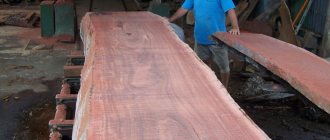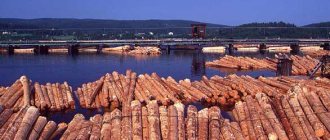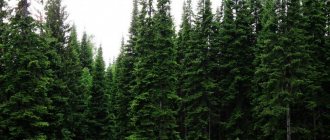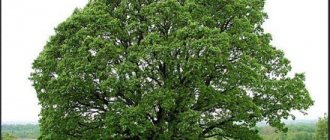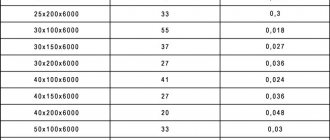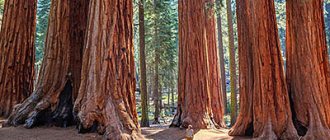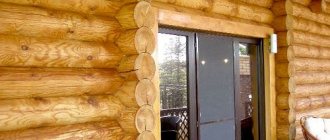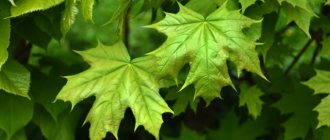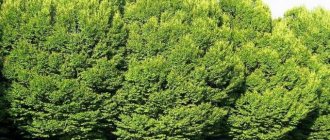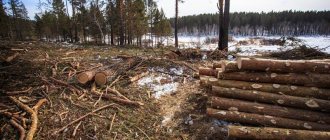Before we begin to consider specific types of wood, valuable and exotic, we will expand on these concepts.
Valuable wood species differ from other ordinary species by high performance characteristics, such as: expressiveness of texture, hardness, shape stability, degree of shrinkage, resistance to loads, degree of oxidation and others.
Rare and unusual species are usually called exotic woods; Exotic wood is often, but not always, distinguished primarily by its appearance, which is unusual for the average eye, which can create a non-standard aesthetic and give the interior in which it is used a unique atmosphere.
Not every valuable breed is exotic, and vice versa, but often these concepts intersect, and even more often they are simply equated with each other. Now a few words about the qualities of wood we mentioned above. Among them, durability is not mentioned - one of the most important criteria when choosing wood products.
The fact is that durability is a derivative of many other performance characteristics; How long a product made from a particular type of wood will serve you directly depends on how much and quickly the useful wood layer wears out, that is, on its hardness, but the ability of wood to maintain its shape unchanged also cannot but influence the “lifespan” » products made from this wood; about the ability to withstand moisture, temperature and other loads is even more clear - the higher this indicator, the more durable the wood and, as a result, products made from it.
It is important, however, to understand that another, sometimes the most important indicator on which the durability of furniture and other wooden products depends, has nothing to do with the wood itself - we are talking about care.
Of course, one can assume that, for example, an oak wooden tabletop, which no one cares for, will, all other things being equal, “last” longer than a pine tabletop, which a zealous owner takes care of like the apple of his eye, but this does not mean that cleaning, processing wood with protective compounds, updating varnish - unnecessary worries.
There is the same difference between wear and tear of wood as between growing up and aging.
Let us finally move on to valuable and exotic wood species in the format of a laconic “dossier”.
In order not to rack our brains over the order in which to arrange these breeds in our review, we decided not to give preference to any specific performance quality or, especially, to our tastes, and choose the good old alphabetical sorting. So, let's go.
Abashi
Our parade opens with abashi, soft wood of a noble cream or yellowish hue with low thermal conductivity and high moisture resistance, practically without knots, obtained from a huge, up to forty meters in height, deciduous tree called Triplochiton hard-resin, which grows only in the tropical forests of western Africa, and apart from the rest of the trees, as if aware of its exclusivity.
The almost complete absence of knots is due to the fact that the abasha has a crown only at the very top - accordingly, almost the entire tree consists of a smooth trunk without branches.
The density of abashi wood is 400 kilograms per cubic meter. Abashi is perfectly tinted and can be easily processed – both manually and by machine. Hammering nails or screwing in screws does not cause cracks in the abasha wood; different parts of the abasha are easily and tightly glued to each other.
For such remarkable performance characteristics, abashi was nicknamed African oak. By the way, we’ll get to the real oak soon.
Abashi has many uses. Of course, both in Russia and abroad, abashi is used mainly for arranging steam rooms in baths, but ship and aircraft builders, manufacturers of stringed musical instruments, furniture makers and many other specialists also practice the use of abashi wood in their business.
The Russian Master assortment includes many products made from this wood: abashi paneling for baths and saunas, boards and other structural elements of shelves, corners and other moldings, many bath accessories - from walkways and headrests to lampshades.
The next valuable type of wood - high-mountain abashi - is obtained from the same deciduous tree, Triplochina hard-resin, only growing in the African highlands, hence, as you might guess, the name.
The wood of high-mountain abash is denser, its density is 560 kilograms per cubic meter. The color of the texture is also cream, but closer to grayish, less often yellowish-brown, and sometimes - in aquifers - even gray-brown.
Like regular abashi, alpine abashi is most used for steam rooms in particular and bath decoration as such; it is also often used for the manufacture of flooring and sports equipment.
The catalog of the “Russian Master” presents the following products from high-mountain abashi: boards for shelves, structural elements of shelves for finishing a sauna.
Valuable breeds found in Russia
Our country is one of the world's leading suppliers of wood materials. Russia has vast areas of forest, with different climates in the regions. Expensive varieties of wood with outstanding characteristics are more common than in any other country. Valuable wood species grow in Karelia, Siberia, the Caucasus and many other regions. Export has always brought considerable sums to the budget; within the country, choosing a business for processing expensive breeds is considered an elite area where many people strive to get into. Almost every housewife dreams of having a countertop, cabinet or kitchen made from natural rare varieties at home. Strength, durability, moisture resistance and luxurious appearance have always been the distinctive features of such products. Each type of wood has its own unique characteristics.
Karelian birch
It is distinguished by a special pattern on the wood, which appeared due to an anomaly - stem pitting syndrome. The bark is golden brown, fading to white. The formation of characteristic mounds (wilds) leaves part of the bark inside the birch, resulting in an unusual pattern inside the trunk. When cut, it looks like wooden marble. Due to the limited number of trees, it is used in the creation of arts and crafts and furniture.
Aralia high
It is also called the devil's tree. It has a slightly branched trunk, dark brown or gray bark, on which there are short thorns. In Russia, this tree can be found in the Far East, Sakhalin, the Kuril Islands and the Primorsky Territory. The valuable wood of this tree can withstand low and high temperatures and looks original. Due to its special softness, it is used mainly in the manufacture of small-sized products.
Cherry
One of the most popular expensive wood species. It has an unusually beautiful color (red, red-brown, pinkish-gray). In Russia, this tree grows in all regions where the climate allows, and it cannot be called rare. It is considered valuable because of its softness, flexibility in processing, and polishes well. Cherry is used to make furniture, instruments for musicians, and designer luxury items.
Manchurian walnut
Rarely found, in Russia it grows in the Far East. It is distinguished by a memorable color: along the edges there is valuable wood of a light shade, and in the middle there is a stain. This is the kernel of a Manchurian nut, it has a bright brown color. Thanks to this feature, it is used to create decorative elements. The tree grows only in deciduous forests, of which there are not many in our country, so it is practically not used to create large products. Occasionally you can find expensive plywood made from this valuable type of wood on sale.
Oak
Oak products do not allow moisture to pass through, are particularly hard, and retain their appearance for many years. If the wood is processed correctly, the color will turn out beautiful, and over time it will darken and acquire a noble shade. Particularly valued is oak that has lain under water for some time - stained. This variety is highly durable and has excellent quality. The only caveat: before processing it requires thorough drying without the use of automation, otherwise there is a possibility that later cracks will appear on the valuable wood.
Crimean mahogany
Southern tree, loves warmth. In Russia, in addition to the Crimean lands, it is found in the Krasnodar Territory. Mahogany is rarely found in nature; the value of the species lies in the uniformity of the wood. The absence of defects makes it easy to process and gives it the ability to transmit sound without distortion. Because of this unique property, it is especially valued in the production of musical instruments and acoustic systems. It is also used to create large interior items.
Ash
Externally, valuable ash wood resembles oak after processing. The peculiarity of the breed is its flexibility, which is why curved, fancy products made from ash work best. It is used in the production of finishing materials, when decorating premises, and to create furniture. The wood is viscous, elastic, and looks beautiful in the interior. There are more than 10 varieties of this expensive wood, which differ in color and density.
Siberian larch
According to its characteristics, it has a higher density than oak. Distinctive feature: unusual structure and color. The heartwood has a reddish tint, the sapwood is narrow, white or yellowish. The growth rings are clearly visible. The density is uneven, there are few knots on the trunk. Does not absorb water well and is difficult to dry. It is used to create parquet boards, where the moisture-repellent properties are most clearly expressed.
Maple
One of the varieties of the most valuable wood, superior in hardness to all other varieties. After processing it has a very light, almost white color. There are specimens with a yellow or pink tint. It has the same drying problems as larch and can crack. Often, when creating products, maple is combined with darker, expensive wood species for contrast.
Juniper
Valuable wood is used in wood cutting due to its optimal hardness. The density is high, does not swell in water and does not decrease after drying. The texture contains stripes and waves; it looks beautiful when cut obliquely. The roots are used to make fancy products for home use. Wood is used for household items, canes, barrels and even fishhooks.
White acacia
It is better processed raw; extremely careful drying is required. Acacia wood has a light yellowish tint and darkens over the years. Elastic, well polished. Suitable for parquet and furniture.
Siberian cedar
The core is narrow, the sapwood is light yellow without a clear transition between them. Cedar bark grows into valuable wood, giving an interesting texture and unusual pattern. The species is soft, conducts heat well, and is flexible with high strength. This expensive grade is used for finishing yachts and luxury interiors.
Akazhu
The next valuable tree species - aromatic cedar, or acaju (less commonly - red acaju) - is often called differently, depending on the country of origin: for example, Spanish cedar, Trinidad cedar, and so on.
In English-speaking countries, this species is known as “cigar box cedar,” but the main trade name in international markets is Central American cedar. It is a soft, medium-grain wood with low thermal conductivity and a density of 480 kilograms per cubic meter.
Aromatic cedar is famous for its special resin, which not only smells pleasant, but also repels insects and other pests. The color is darker the older the tree from which it is obtained.
Easy to work with, Acajou wood can present some problems due to the presence of rare rough areas that require additional, finer sanding.
Veneer, furniture, interior decoration, plywood, musical instruments (especially guitars, both classical and Spanish), even small private boats and building cladding - many things are produced using aromatic cedar.
Specifically, in our assortment, acaju wood is represented by the following product categories: lining for saunas and baths, bath accessories (fencing for lamps).
Balau
The next valuable and very rare acquaintance that needs an introduction is the red balau.
Tough and dense (860 kilograms per cubic meter), very hard wood of red-purple or red-brown shades with a large, uniform structure and high resistance to abrasion. The trees from which red balau is obtained grow only on the island of Borneo. The surfaces of parts made from red balau are remarkably processed.
Products made from red balau are distinguished by their unusual biostability, which means that unfavorable conditions that are too tough for almost all other types of wood for furniture or other products made from red balau do not pose a particular danger.
Sleepers, furniture, sports equipment, ship equipment, elements of external and internal decoration, terraces, pillars, beams - these are the main areas of application of the red balau, which require wear resistance from wood raw materials, coupled with the ability to withstand enormous loads, that is, the very qualities that the red balau has are presented in abundance.
The “Russian Master” assortment includes many products made from red balau: laminated veneer lumber, planks, staircase and ordinary pillars, laminated beams, columns, decking boards and fencing for terraces, decking and cladding panels.
You can find prices for various products, in particular the price of laminated veneer lumber, in our store.
White acacia
This species is not widespread in Russia, it is very rare, so you have to buy it from other countries. And it is in demand because it is superior to oak in reliability. White acacia has a yellow tint that darkens over the years, which gives it a special charm compared to others. The price is justified in terms of the work involved.
To process these trees, you need to have a good level of skill, otherwise there is a risk of ruining the surface structure. But with all the advantages, there are also many disadvantages. Acacia requires a lot of attention, especially when it comes to moisture. The surface must be thoroughly dried if it gets wet.
bangkirai
Bangkirai is a very hard and very wear-resistant wood with a density of 980 kilograms per cubic meter, obtained from a tree called Shorea Smoothleaf, which grows in Southeast Asia, mainly in Kalimantan.
Color – light brown, less often – reddish brown; texture – medium to small sizes. The sapwood and heartwood of bangkirai are almost the same in color and texture.
The main application of Bangkirai wood is marine construction; all kinds of piles and barriers, sluice gates and fender structures, as well as decking and pedestrian walkways, elements of walkways and floor coverings for both residential and industrial premises - these are the main types of products made using Shorea smooth-leaved wood.
Speaking about industrial premises, it should be clarified that even in chemical plants, Bangkirai floors, as they say, “will not let you down”, because their resistance to acids and other “nuclear” compounds is unusually high, for the same reason tanks and bathtubs are often used in the chemical industry and vats from bangkirai.
Products of the “Russian Master” from Bangki Rai: decking boards, decking. A slightly less rare, but still very, very valuable species is the bangkirai red, native to mainland Malaysia, a wood with medium hardness, high wear resistance and a density of 800 kilograms per cubic meter.
The structure of bangkirai red is very monochromatic, so the texture is practically not visible. Red bangkirai holds its shape wonderfully and has a pleasant, camphor-like smell, which, as in the case of red cedar, is also a “scarecrow” for insects and other harmful creatures.
When making products from bangkirai red, it does not need to be processed at all (however, the quality of the surface treatment is excellent), but experts recommend covering the surface with a special oil to protect the wood fibers from ultraviolet radiation.
Do not be alarmed if minor cracks appear on the surface of bangkirai red products - this is a natural feature of this type of wood.
Flooring in private homes, terraces, windows and doors, planks and cladding panels are the main areas in which Bangkirai red wood is used.
Accordingly, on our website the following products of the “Russian Master” using bangkirai red are presented: plank and decking boards, logs and fencing for terraces, decking, cladding panels.
Bintangor
Bintangor, or capophyllum, is a valuable type of wood native to Malaysia, of medium hardness and wear resistance, with a density of 560 to 770 kilograms per cubic meter, almost without knots.
Easy to saw and just as easy to process; when cutting, the cross-section often fluffs up with lint; driving a nail or screwing a screw into a Bintangor piece requires pre-drilling.
The color of capophyllum sapwood ranges from yellowish-brown to orange, and the kernel is pinkish, less often reddish-brown. The texture of bintangor is large and uneven, the planed surfaces are shiny, there is a striped pattern on radial cuts, and a zigzag pattern on tangential cuts.
Bintangor products are used both indoors and outdoors (without direct contact with the ground).
The main areas of application for Bintangor are: small private vessels, masts, spars and other equipment, flooring, furniture and cabinetry production. Bintangor is also considered throughout the world to be the optimal wood species for making springboard boards.
Panels, wooden wallpaper, lining for baths and saunas - these are the products of “Russian Master”, which are made using bintangor (capophyllum).
Dahoma
Another valuable hardwood is dahoma, a hard and wear-resistant wood with a density of 710 kilograms per cubic meter, obtained from African rain forests and, to a lesser extent, from artificial mixed plantings.
The color of Dahoma sapwood varies from whitish to grayish-red, with the sapwood clearly demarcated from the golden or light brown core.
Dahoma is distinguished by the presence of light and dark zones caused by the “striation” of the fibers. The rough and fleecy structure of dakhoma is, however, characterized by uniformity.
Dakhoma can be processed remarkably well, but at the same time it seriously dulls the working surfaces of tools. As a result of finishing processing, a surface with excellent characteristics is obtained.
To avoid scuffing the fibers of the dahoma, it is recommended to plane it at an angle of ten degrees, and to avoid splitting, drill it before using nails and screws.
The main areas of application of dakhoma are the manufacture of beams, floor coverings, external cladding and interior decoration, furniture, sleepers; Dahoma is widely used in construction and maritime industries. “Russian Master” offers you terrace logs, decking and decking boards made of dahoma.
Rosewood
The species is heartwood, the sapwood is narrow, light yellow in color with a grayish tint, the heartwood is purple-brown or chocolate-brown with black and dark-brown stripes and veins, the growth rings are hardly noticeable. Mature wood is very dark (dark brown) with lighter longitudinal veins, and may have a subtle purple or lilac tint. The cut shows the exits of numerous pores (channels) in the form of small black dots or dashes. The wood is very dense, difficult to cut, and contains essential oils that make finishing difficult; It gets darker over time.
READ ALSO: Use of hardwood in construction
Oak
So we got to the promised oak.
The density of oak is 760 kilograms per cubic meter; Literally every schoolchild knows about the hardness, wear resistance and durability of this valuable type of wood. In general, the Latin name of oak – “quercus”, literally translated as “beautiful tree”, is its comprehensive characteristic, but we will still allow ourselves to go a little deeper into the details.
Porous oak wood is highly resistant to rot, fungi and other negative environmental factors. Oak sapwood is light yellow (by the way, this is also why abash is called “African oak”).
In addition to the fact that oak wood itself has a beautiful texture, over the years it darkens, acquiring an even more aesthetic, noble appearance.
It is not surprising that in the Peter the Great era, the poaching of a single oak tree was punishable by death. They have made everything from oak since time immemorial. Currently, the main areas of application of oak wood due to its elasticity, hardness, strength, impact resistance and other excellent performance characteristics are: the production of finishing materials, construction, the production of garden furniture from wood, doors, flooring, shaft fasteners, underwater structures and much more. much more.
The “Russian Master” catalog is full of oak products - wooden wallpaper, fonts (including heated ones), ofuro, ceiling boards, bath lining, bath accessories (sprinklers, buckets, ladles, gangs, etc.), windows and wooden sauna doors.
LAPACHO
Lapacho tree - properties and characteristics
Description: Name: Lapacho (local). Botanical name: Tabebuia Serratifolia (bot.) German name: Ipe (German) English name: Guayacan (English)
The species name tabebuia comes from the language of the South American Indians. This species includes a large and diverse population of trees that has undergone many changes in its botanical nomenclature over time. Today, this species is divided into four different groups: thuja, roble, lapacho and others. The most common name used is ipe. Sometimes it is called ironwood. As a rule, trees reach a height of 40-45 meters with regularly shaped trunks with a diameter of 60-90 cm.
Color: Relatively wide sapwood is yellowish-white in color and differs sharply from heartwood. When freshly cut, ipe heartwood is grayish in color, darkening over time to grayish green and brownish olive. Freshly sawn ipe wood contains a wide range of colors, quickly turning into more uniform, darkening brown and dark brown colors. The difference in color depends mainly on where the tree grows. The color can vary from light yellowish-brown with a greenish tint to dark brown, almost black.
This wood is a very durable species. The wood is very resistant to rot, fungi and termites, and is resistant to the effects of shipworms. It has been tested by the US Forest Products Laboratory with a plus rating of 25 years or more. The wood has increased resistance to natural fire (rated by NFPA class or UBC class 1). Wood is highly resistant to chemical treatment.
Growing region: Central and South America (Colombia, Venezuela, Brazil, Peru, Bolivia).
Application: suitable for wooden structures with high loads: stairs, floors, beams, etc. Contains a lot of oily substances and is highly resistant to external influences. This is one of the few types of wood that is recommended for “street” (terrace) wood coverings. Floor coverings for industrial and residential premises, furniture, stair handrails, construction beams, logs, timber, decorative veneer. Indispensable for arranging sea docks, berths and piers.
Lapacho is a type of ipe; grows in the tropical forests of Central and South America. Lapacho sapwood is much lighter in color than heartwood. The color of lapacho wood varies from light, ash-beige or fawn to the darkest mocha. The structure of the tree is wavy, with thin fibers; intertwined veins are visible. Lapacho wood is heavy and hard, difficult to work but easy to polish; it is also suitable for turning products; very resistant to treatment with pesticides. In addition, Brazil nut wood lasts a long time, does not rot, and is not susceptible to fungi and parasites (the tree is resistant to termites, but can be damaged by shipworms). Lapacho wood is used in the production of furniture, parquet, in large-scale construction and industry (due to the high strength of lapacho, sleepers and industrial flooring are often made from it).
And in South America, the drink made from lapacho bark is better known than the parquet made from its wood; his recipe for this drink was known to the Incas.
Lapacho contains a lot of vitamins and microelements: iron, potassium, copper, calcium. Lapacho contains 18 different quinones, which are rarely found in a single plant. No caffeine. The Incas called lapacho the “tree of life” and used a drink made from its crushed bark to treat almost all diseases: intestinal inflammation, cancer, diabetes, arthritis, anemia, asthma, impotence, hair loss, etc. Today the plant is used in clinics in Brazil to treat patients with leukemia, diseases that reduce immunity. The antitumor effect explains the presence of an antioxidant such as carnasol in lapacho. And the presence of tecomine helps reduce blood sugar levels.
Method of preparation Perhaps lapacho is the only tea-like drink that is boiled for preparation. The preparation method is simple: boil a liter of water and add 3-4 teaspoons of lapacho, then boil for another 5 minutes and let the tea steep for another 15 minutes. The result is a light brown, refreshing drink with a peculiar bitter taste. You can drink it either warm or cold.
Golden cedar
Unlike oak, you are unlikely to have heard of the next valuable tree species that we will consider - this is the Otie golden cedar, which grows in Nigeria, Kenya and Tanzania.
The soft, moderately resistant wood with low thermal conductivity and a density of 420 kilograms per cubic meter comes from semi-tropical rain forests and can range from a rich golden brown to tan color, with beautiful dark touches.
Over time, due to exposure to the environment, Otie Golden Cedar wood products take on a light reddish-brown hue. The medullary rays make the pattern mottled on radial sections.
The grain of Otie Golden Cedar is generally straight and the grain is medium in size. The main characteristics of this valuable type of wood are high moisture resistance coupled with low thermal conductivity, which makes Otie golden cedar wood an ideal material for the manufacture of bath decoration elements.
Lining for baths and saunas, accessories for baths (fences for lamps) - these are the products using Otie golden cedar that are presented in the Russian Master catalog. The next valuable type of wood that we will pay attention to is coniferous.
Canadian cedar
This is Canadian red cedar (more often referred to simply as Canadian cedar, although it grows not only in Canada but also in the United States), a soft wood with low thermal conductivity, high resistance to abrasion and a density of 360 kilograms per cubic meter.
The straight-grain structure of Canadian red cedar wood ensures that unevenness does not form during its processing, and the use of fastening materials does not lead to cracking.
One of the main qualities of Canadian cedar is its ability to maintain its shape even with sudden climatic changes, caused by the relatively low compression ratio of wood fibers.
The structure of Canadian red cedar wood is porous, as a result of which Canadian cedar has remarkable soundproofing characteristics. It is not surprising that construction experts prefer products made from red Canadian sneaker for finishing the walls, floors and ceilings of residential premises.
The advantages of Canadian red cedar do not end there: due to its low density, in addition to what has already been listed, it is also an excellent thermal insulation material.
It’s not cold in winter, not hot in summer – this is about houses trimmed with Canadian red cedar. Being also not subject to rotting, red cedar, without exaggeration, is one of the most reliable and durable materials; This is confirmed by the fact that most antique products and even some archaeological finds are made from this valuable type of wood.
“Russian Master” brings to your attention products made from Canadian red cedar: boards for shelves and structural elements of shelves for finishing a sauna, lining for baths and saunas, swimming pools (including heated ones), ofuro, infrared cabins, saunas; corners, platbands, baseboards and other moldings, various bath accessories - lamp railings, walkways, thermohygrometers, headrests, backrests and so on.
Kasai
Growing in Southeast Asia, as well as in Australia and Oceania, kasai can rightfully be called both a valuable and rare species of wood.
Hard, dense (750 kilograms per cubic meter) and hard-wearing, kasai wood can be found in almost any imaginable shade of brown - usually with flecks of purple-red. Possessing a moderately pronounced, sometimes wavy structure with light glossy reflections, kasai wood invariably evokes enthusiastic sighs even from the most indifferent to luxury people.
Perhaps the only drawback of kasai wood is that sometimes the trees from which it is extracted have twisted trunks and, as a result, a shape that is unsuitable for processing. However, this makes the Kasai an even rarer breed, and products made from Kasai even more desirable.
Pliable for sawing, kasai wood adheres wonderfully and holds fastening material no less wonderfully; Craftsmen should keep in mind that kasai dulls tools when cutting - not as much, of course, as Dahoma wood does, but still noticeably.
Construction, decoration, repairs - these are the main areas of application of kasai.
Furniture, floor coverings, musical instruments, cladding of small private ships, berth decking, doors and windows, panels - the list could take a long time, so let’s stop listing and pay special attention to those products from kasai that are presented directly in the “Russian Master” catalog: this terrace boards.
Ud ($20,000 – $25,000 per 1 kg)
Also known as aloe, agar or agacholl tree, oud, kalambak. Distributed exclusively in tropical rainforests of Southeast Asia.
This is the rarest and most expensive tree in the world, and its price continues to rise every year. Due to large volumes of deforestation and limited resources, the agarwood tree is already in danger of extinction. The value of oud lies in its dark core, impregnated with aromatic resin. This is a tree’s protective reaction to infection by a special type of fungus. It takes at least 20 years for the resin to acquire its characteristic sweet, woody, smoky aroma with balsamic notes.
Oil is extracted from the wood, which is used in the production of luxury perfumes. It costs more than gold, because to obtain 12 ml of the substance you need to process more than 20 kg of wood.
Siberian cedar
The next valuable conifer on our list is Siberian cedar, or Siberian cedar pine. Soft, but very resistant to abrasion, light wood with a density of 420 kilograms per cubic meter with yellowish-white sapwood and yellow-pink core (and there is no clearly distinguishable boundary between them; due to the smooth transition from core to sapwood, a beautiful pattern is created).
Siberian cedars are famous for their longevity: on average, one forty to forty-five meter Siberian giant lives from five to eight CENTURIES. Contrary to the name, in addition to Siberia, these cedars also grow in Mongolia and the northern regions of China.
This valuable wood species is not only easy to process, but also practically does not dull the cutting edges of tools. Knots and bark pockets can sometimes prevent the surface from approaching perfection even after careful processing.
Paints and varnishes and protective compounds are “assimilated” by Siberian cedar without difficulty. The use of fastening materials in relation to parts made of Siberian cedar does not require preliminary drilling. Siberian cedar is not afraid of insects and other pests, and temperature changes are not scary for it either; In addition to everything, Siberian also has a wonderful and, according to traditional healers, a healthy smell.
Veneer, pencils, art products, pencils - many things are not produced from Siberian cedar wood, but its main areas of application are, perhaps, the production of materials for exterior and interior decoration.
Buckets, buckets, ladles, steamers, dousing devices, clocks, thermometers and thermohygrometers, imitation timber - these and some other products made from Siberian cedar are in the Russian Master assortment.
Ebony ($100,000 per 1 m3)
Very dense, heavy and expensive wood. In Ancient Egypt it was valued on a par with gold and ivory. Ebony trees belong to the Persimmon genus and grow in humid equatorial forests. The wood is predominantly black in color, with no visible annual rings. Moisture resistant, not subject to rotting.
There are several varieties of ebony, depending on the type of plant. Black Ceylon is considered the best. This type of wood is twice as hard as oak boards and has virtually no pores. After polishing it acquires a perfectly smooth surface.
Cameroon ebony is more common, but inferior in quality, as it has pronounced pores. The rarest species is the lunar one, found only in the Philippines. Exclusive cues and interior items are made from it. The price of one square meter of moon ebony parquet starts from $50,000.
Kekatong
From coniferous back to deciduous: kekatong.
Extraordinarily dense - 1200 kilograms per cubic meter - very hard and wear-resistant kekatonga wood has a beautiful texture and a clear pattern of dark red color. This miracle grows only on the island part of Malaysia. The quality of the surface treatment of the kekatong is such that almost all of the breeds we have listed will be envied. To prevent kekatong products from fading under the sun's rays, it is recommended to treat them with a special protective oil. Flooring, furniture, terraces - whether private or public, the kekatong will withstand any wear and tear and any load.
On our website you can get information about the products of the “Russian Master” from kekatong: decking boards, decking, planken, cladding panels. Our list would be incomplete without Siberian larch, another hard and dense (660 kilograms per cubic meter) valuable wood species.
Siberian larch
Siberian larch has average thermal conductivity and high resistance to abrasion. The sapwood of Siberian larch is white and narrow, and the core is reddish-brown.
The tree rings are clearly visible in the cross-section. After teak, which we will talk about a little later, Siberian larch is the second heaviest and hardest valuable species growing in Europe. In addition to these qualities, the wood of Siberian larch is strong, hard, elastic, resinous and, as a result, resistant to a variety of pests.
There are also disadvantages, the main ones being the tendency to cracking and cross-layering. The heartwood of Siberian larch is incredibly resistant to any climatic changes and in terms of durability can compete with oak wood, especially when it comes to underwater use.
Once dry, a product made from Siberian larch becomes stronger than before - so much so that sometimes it is not even possible to simply hammer a nail. Of course, you can’t do without preliminary drilling.
Construction and furniture production, railway and shipbuilding, manufacturing of sports equipment, terraces, front gardens and fences, chemical industry - it is easier to list in which areas Siberian larch is NOT used, it is so reliable and durable.
Stairs, doors and windows, gates and facade coverings, walls, roofs and ceilings, balconies - in fact, if desired, the entire country house can be built from Siberian larch, furnished with heaps of furniture from the same valuable type of wood.
Often, wealthy owners who can afford to purchase products made from tropical and any other exotic wood species still prefer furniture and other products made from Siberian larch.
The “Russian Master” catalog contains many products made from Siberian larch: lining, decking boards made of larch, imitation timber (block house), wooden wallpaper, false beams, moldings, parquet boards, tongue and groove, decorative columns, planks, components of stairs - steps, turning areas, bowstring; fonts, ofuro; walkways for baths and saunas and other bath accessories.
Meranti
Dark red meranti is a hardwood native to Africa, Malaysia, Southeast Asia, India, China and Indonesia; The solid wood of dark red meranti has low thermal conductivity, high wear resistance and a density of 700 kilograms per cubic meter.
Several types of valuable wood species are combined under one common name “meranti”. Specifically, the dark red meranti is so named because of the corresponding color of the wood; its texture is coarse and uniform. Moisture resistance, lightness and durability are the main advantages of dark red meranti; In addition, parts made from this wood are easy to process, glue well, paint, polish and hold fastening materials.
Furniture production and construction are the main areas in which dark red meranti wood is used. Most often other products from this valuable species are made from gazebos, parquet, elements of interior and exterior decoration, doors and windows, as well as the lining of marine vessels.
The “Russian Master” assortment includes products made using dark red meranti wood, such as: facade cladding boards, planks, terrace boards and decking, cladding panels and boards.
Sandalwood ($20,000 per 1 kg)
A rare and expensive tree that grows in tropical Asia and India. There are white or yellow sandalwood (Santalum), and red (Pterocarpus santalinus). The latter has been highly valued for several thousand years. In China, furniture made of expensive sandalwood was the privilege of the imperial dynasties, and to this day it remains a symbol of luxury and wealth.
The high price of wood is explained by its rarity, as well as the slow growth of the tree. It is distinguished by its rich red color, durability and pleasant smell.
White sandalwood contains much more aromatic substances (from 6% to 10%) and is used to obtain perfume oil and incense. In China and India, figurines, boxes and small souvenirs are also made from it, which retain a pleasant aroma for years.
Merbau
Merbau is a very hard and very wear-resistant valuable hardwood species with a density of 980 kilograms per cubic meter, growing in Australia and Oceania.
The merbau core can be brown-orange, brown or red-brown in color and darkens with weathering. The appearance of merbau products is much more recognizable and popular than the name of this breed; This is facilitated by the unique structure, the noble combination of orange and brown and the characteristic patterns on tangential sections formed by lighter parenchymal zones.
Of all the valuable and exotic wood species we have listed in this review, merbau can boast perhaps the best quality of surface treatment, as well as extraordinary stability of shape. There is an interesting aspect to using merbau wood outdoors: the first few times there is rainfall, orange-red sap comes out of the wood's pores.
The results of these “bleedings” can be easily removed with a damp cloth. There is no need to fear that with the release of these juices, resistance to the negative effects of insects and other pests will decrease; for products made from merbau wood, it remains at a consistently high level. Exterior and interior decoration, furniture production, production of veneer and floor coverings - these are the main areas in which merbau is used.
Merbau is especially often used in the manufacture of components of terraces. "Russian Master" offers decking and decking, planken, cladding panels and some other products made using merbau wood.
Balsamo ($5500 per 1 m3)
Rare exotic wood species are also found under the names Santos Mahogany, Cabriuva and Incienso. It is obtained from trees of the Miroxylon family, growing in Central and South America.
The color is reddish-brown with dark longitudinal intermittent stripes. A fresh cut smells like vanilla, as the wood contains many aromatic oils. They are used to make Tolutan balsam, which is widely used in the perfume industry.
Balsamo is a very rare tree, so it comes to the European market in limited quantities.
Juniper
Juniper, also known as heather and juniper, is a soft and light conifer with good wear resistance and a density of 570 kilograms per cubic meter.
Pinkish-white sapwood, yellow-brown or gray-brown heartwood; a pleasant smell, simultaneously reminiscent of cedar and cypress. Juniper wood is easy to cut and pierce. It is generally accepted that the main quality of juniper is its aesthetic appearance, but this does not negate its high performance characteristics, thanks to which juniper is successfully used in medical and perfume production, carpentry and the food industry.
The size of the tree from which this valuable species is extracted is very small, and therefore juniper does not have significant industrial significance; it is used for carving, turning, children's toys and canes are made from it; wooden utensils, barrels and other vessels for liquids are often made from juniper, because it is easy to process and does not crack or warp during use.
“Russian Master” brings to your attention decorative panels and other bath accessories made of juniper.
Pau kijang
The next valuable hardwood species is one of the densest in the world - pau kijang, the average density of this very hard and wear-resistant wood, mined in Malaysia, is 1200 kilograms per cubic meter. Direct arrangement of fibers, large and heterogeneous texture, yellow-brown core sharply separated from the sapwood. The smoothness of the pau kijang surface after processing is average, the strength is also moderate; What, you ask, is so valuable about this breed?
Of course, it is the ability of products made from pau kijang to withstand heavy loads, including static ones, which is why pau kijang wood is in great demand in bridge construction. In addition to construction supports, pau kijang is also used to make rafters, sleepers, joists and beams, and, less commonly, furniture, parquet and panels for premium finishing.
The assortment of “Russian Master” includes countertops, window sills, steps and turning platforms for stairs and panels, all made using valuable pau kijang wood.
Precious tropical wood species
Some tropical wood species are considered endangered. Most of the elite varieties come from Africa. All the most expensive wood grows on this continent, it is difficult to obtain, and it is impossible to propagate under artificial conditions. Tropical trees have a high degree of shrinkage, hardness and come in unusual shades with a unique texture.
Pink tree
Grows in Brazil. Expensive wood with a color from light pink to purple with light inclusions. Used for expensive gift items and musical instruments.
Rosewood
Rosewood wood is one of the most expensive in the world. Its homeland is India, Brazil and Latin America. Considered a royal breed for its aesthetic appearance and quality. Furniture and parquet made from it are valued in the highest echelons of power.
Paduc
The heartwood and sapwood are of different colors, all shades of red. Fresh logs have a bright orange color. The wood is dense and heavy. In addition to furniture, it is used to make piece parquet and household equipment, including use in shipbuilding.
Wenge
Dark, dense wood. It does not cover well with varnish; waxing is recommended. Pairs perfectly with light varieties of expensive wood. They are used where high loads are planned: sports equipment, furniture, stairs.
Zebrano
Tropical wood of West Africa. The sapwood is golden yellow or cream in color, penetrated by narrow dark veins. The cut produces a gorgeous striped pattern, similar to the color of a zebra. An endangered breed. It is used to make trim in expensive cars and household items.
Lignum vitae
Wood with black wood, color can vary to light. It has a balsamic aroma reminiscent of incense or cocoa. Its high strength allows it to be used to create rotating parts of various mechanisms and luxury piece furniture. The second name is iron tree.
Ebony
The most expensive wood in the world. It is considered precious; in ancient times it was endowed with magical properties. Ebony wood has a uniform texture, shades from black to purple. Due to the high density, drying takes up to 6 months. And ebony wood will serve for centuries. Sold in kilograms, it is easy to run into a fake. One of the varieties is Macassar wood. Luxury items are created from Macassar ebony, they are used to decorate art objects, and they make pipes and ebony boxes.
Amaranth
The second name is Purple Heart, because of the color. They grow on the banks of the Amazon. Dries quickly, dense and hard wood. Used for furniture, art objects, cabin cladding, and in sports.
Dalbergia
Originally from India. The sapwood is light with a yellowish and purplish tint. The core is from light golden to dark purple, almost black. It is used in shipbuilding and when creating luxury furniture.
Bubinga
It grows in equatorial Africa. The valuable wood comes in all shades of red in the core, the narrow sapwood is cream-colored. They are used to cover airplanes, cars and make expensive furniture.
Bokota
Rare valuable wood with a color ranging from golden yellow to brown. Against this background, a patterned striped texture appears. Flooring, fittings and finishing for furniture, and wooden sculpture are made from it.
Abashi
African oak with a special property: changes temperature depending on the environment. Widely used in the decoration of saunas and baths.
Akazhu
Aromatic cedar with a special resin odor repels insects in the tropics. Used in upholstery of luxury cars and shipbuilding. Spanish guitars are made from it, and in Russia, bath paneling and bath accessories are made from it.
Balau
The color of the wood is from light yellow to brown. The structure is soft, uneven. Flexible and hard board is suitable for wet areas (swimming pools, bathrooms, saunas). And also for window frames, doors and stairs.
bangkirai
The texture is medium to fine and the color is pale golden brown. Resistant breed, easy to process. It is used to make supporting structures in construction, lumber, window sills, and door thresholds.
Bintangor
His homeland is Malaysia. The texture is heterogeneous, the pattern is zigzag, the color of the kernel is from pink to brick-red. The sapwood is milky to orange in color. Used in shipbuilding, for springboards and diving boards.
Dahoma
The kernel is golden or light brown. The sapwood is limited, from light to gray-red in color. It is distinguished by light spots from fibers that interfere with processing. Dakhoma is used to make sleepers, decoration of rooms, ships, terraces and balconies.
Golden cedar
Native to Nigeria, Tanzania and Kenya. Products made from it are reddish-brown in color. Ideal for finishing loggias, saunas and bath accessories.
Canadian cedar
Resistant to temperature changes. Due to its soundproofing properties it is used for finishing rooms. It is not cold in winter and not hot in summer.
Kasai
Southeast Asia, Australia. Wavy, moderate texture, brown in color. Wear-resistant, malleable wood. Used in construction, decoration and renovation of premises.
Kekatong
Color ranges from pinkish brown to cherry. Drawing with lines, waves, inclusions, depends on the cut. Durable kekatong is used to create load-bearing structures, decorative elements and luxury furniture.
Meranti
Able to retain heat. The color ranges from pinkish to red, darkening with age. Paints well. Boats and household items are made from it.
Merbau
Hard and heavy. Texture interspersed with twisting fibers, loops and stripes. Suitable for support during construction, for finishing ships and premises.
Pau Kijang
One of the densest Malaysian breeds in the world. The fibers are straight, the color is golden brown. Widely used in bridge construction, material for rafters, sleepers, beams.
Tali
The sapwood is yellow or gray, the heartwood is warm brown, darkening over time. Wear-resistant, strong material, used for flooring, has proven to be excellent as parquet in public places.
tiger tree
So called because of the striped core. The color of the tropical tree is rich, orange-brown heartwood and light sapwood. Effective in decorating a room and creating luxury accessories.
All types of valuable wood species have a price above average. But the texture, stunning colors and physical properties more than compensate for the financial losses. The durability and wear resistance of the material will help preserve products made from it for many years. The main thing is not to forget to care for wooden surfaces.
Tali
Tali is a valuable hardwood, moderately hard, very heavy and highly wear-resistant with a density of 910 kilograms per cubic meter.
Unfortunately, the trunk of the trees from which this species is extracted is almost always curved, as a result of which it is rare that more than four commercial logs are obtained from one trunk. Thali grows in Africa, mainly in Eastern Africa. Thali wood is characterized by sharp sapwood of yellowish or grayish tints, while the color of the core varies depending on the place of growth and can be either yellow or orange-brown with an admixture of red. Over time, the wood from the core of the waist becomes darker.
Thali is distinguished by its coarse texture, tangled fibers and strong luster of wood. Chamber drying of this valuable wood species should be carried out very slowly and carefully, otherwise the workpieces may become deformed.
Products made from hoist are not afraid of rotting and insects. It undergoes sawing, planing and general processing with great difficulty, the reason for this is the tangled and twisted fibers; The hoist can be turned quite easily. The finishing surface from the hoist turns out to be quite good, easily accepting varnish and mastic. Hoist wood is used primarily for the manufacture of flooring, but in harvesting countries it is often used for the construction of structures, exterior carpentry and carpentry, bridge decks and gates, port structures and sleepers.
“Russian Master”, in turn, offers you decking boards and decking made from thali wood.
Aralia high
Some scientists call it a shrub; its main advantage is its rapid growth. But in the Russian Federation, aralia is very rare, because it can grow well only in Asian countries. Now you can only find it on the Kuril Islands, but still this quantity is very small. In its homeland, it was nicknamed “devil’s tree” because it can withstand both high and low temperatures. But it has a soft structure, so the only place where it is used is to create small-sized products.
- Author: Inna Markova
Rate this article:
- 5
- 4
- 3
- 2
- 1
(0 votes, average: 0 out of 5)
Share with your friends!
9 of the most unusual designer toilets: photos and descriptions of amazing plumbing fixtures
How to clean an iron at home: a review of the most effective methods
tiger tree
Tigerwood is a strong and dense hardwood, hard and wear-resistant.
It grows in South America, from Mexico to Brazil. The strength of tiger wood is 930 kilograms per cubic meter; Another common name for tiger tree is “Brazil nut”. Tigerwood has light sapwood and brown heartwood with unique dark stripes. When exposed to light, products made from tiger wood become darker over time.
The structure of this valuable type of wood is uneven, curled in places, and sometimes there is an interesting combination of hard and soft wood layers.
Unfortunately, tiger wood takes a long time to dry, warps and is prone to cracking, and is difficult to process; but as a result of finishing the surface, a magnificent natural gloss is obtained, which you can admire endlessly.
Negative biological factors - such as insects and rot - are not scary for the tiger tree. It is difficult to find a premium yacht that was made without the use of tiger wood.
Lemon Tree
A species with hard and brittle wood of a yellowish-golden color with an expressive ribbon texture and shiny spots caused by the curling of the fibers; Because citron has "bee's wing" markings, it is an extremely decorative wood that has been used for centuries in the creation of high-value furniture. The wood is very difficult to work due to its specific growth structure, tools become dull due to the great hardness of this wood. Citron dries slowly and should not be exposed to sun or drafts. There is a tendency to check and deform. It is difficult to cut; contains essential oils, which must be taken into account when finishing.
